
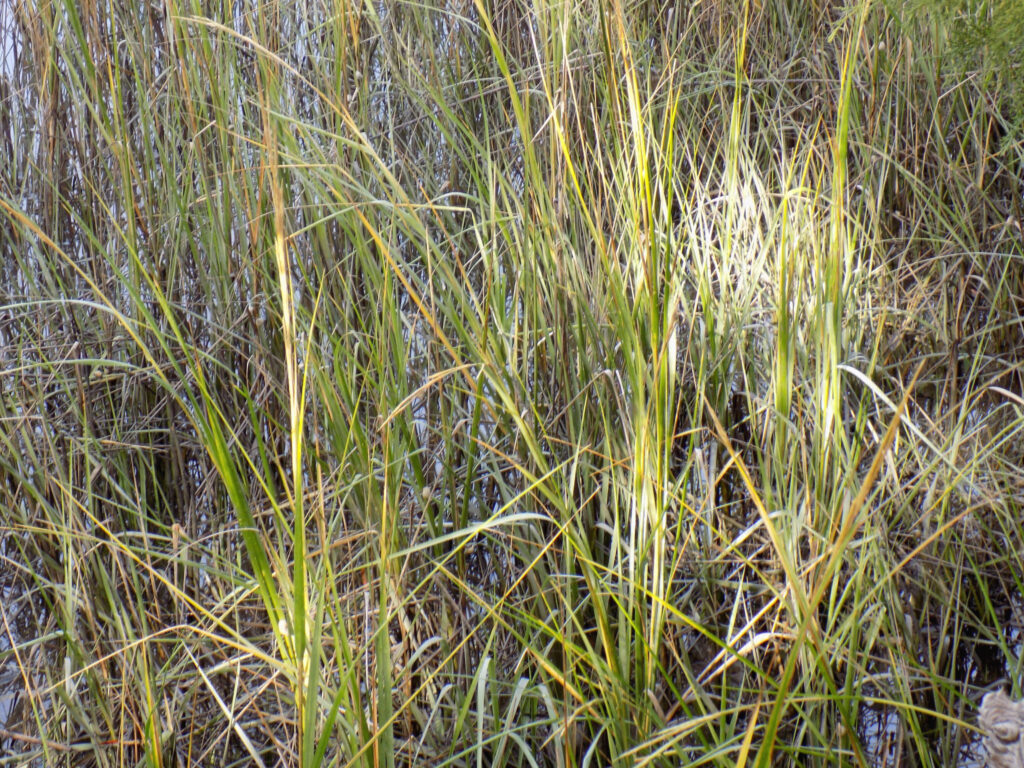
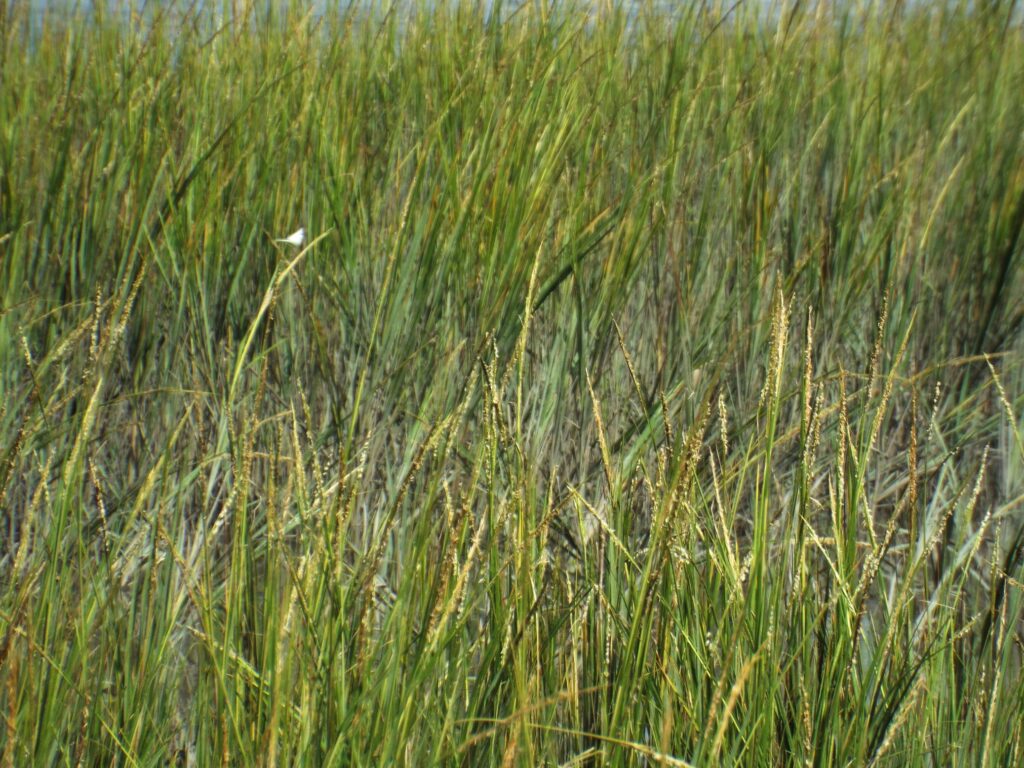

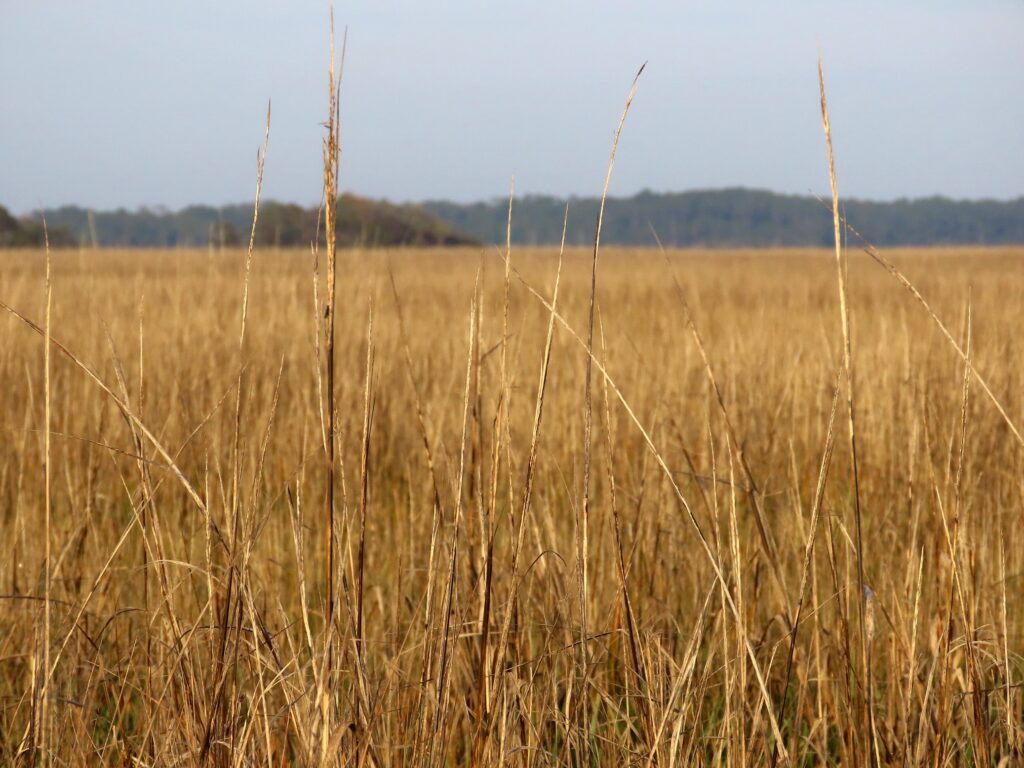
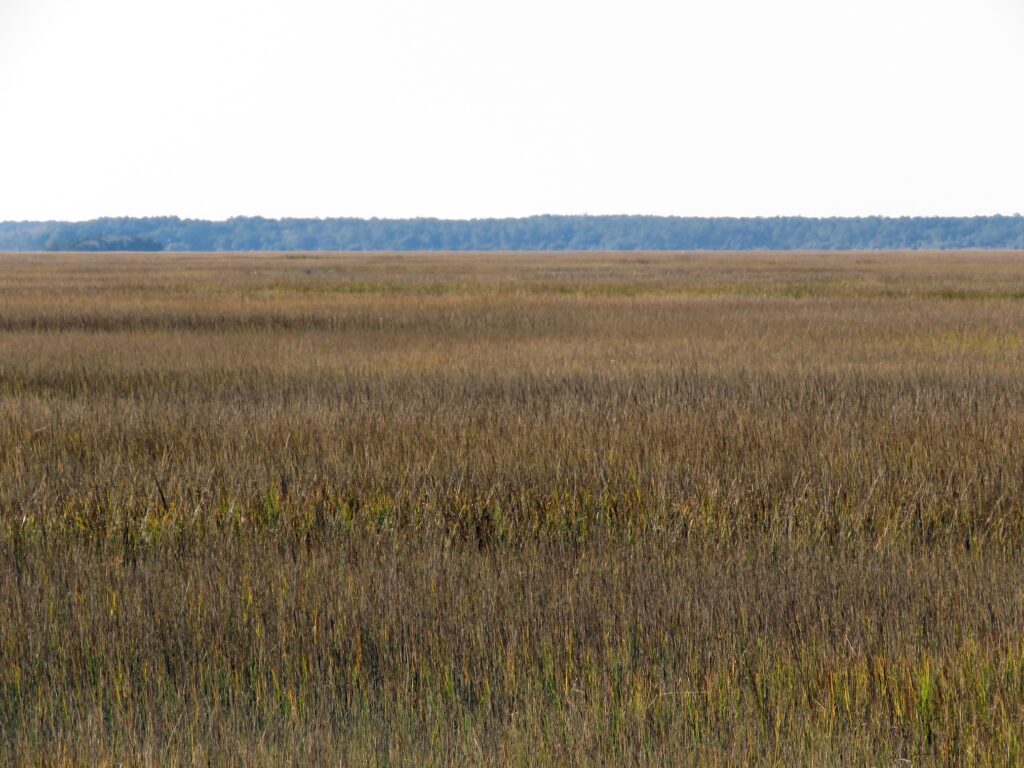
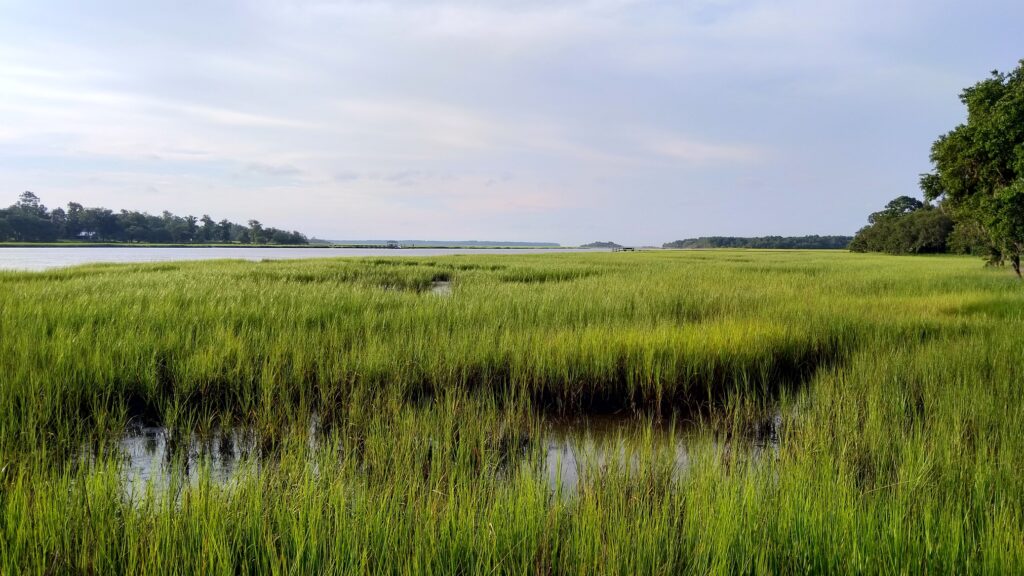
This week for Flora and Fauna Friday, we’re briefly talking about the most ecologically and economically important species in Coastal South Carolina: Smooth Cordgrass (Spartina alterniflora).
Smooth Cordgrass, or more commonly just called Spartina, is a species of grass that’s specially adapted to growing in salt water. This is by no means a trivial feat. Black Needlerush (Juncus roemerianus) is the only other vascular plant in our area that comes close and even its roots can’t handle more than a few hours of saltwater inundation each day. Mangroves in the tropics can accomplish this too but they can’t survive freezing temperatures. Spartina is a perennial grass that spreads via roots and disperses with floating seeds. It dies back to the roots each winter, grows all spring and summer, and flowers in early fall. The processes by which Spartina can survive being submerged for half the day, dry the other half, and exposed to extreme salinity levels throughout its lifespan are downright fascinating and ingenious.
I’ll try not to be long winded but I need to give a little background into plant physiology. Plants are in a constant war with each other over water, sunlight, and nutrients. Losing this competition means death. The best way for a plant to avoid competition and ensure it has enough of all of these resources is to carve out a “niche”. An ecological niche is a stable combination of habitat and resources that an organism is best suited to live within. These niches can be very specific or fairly broad. Spartina fills a rather narrow niche environmentally but it has no competition. With no other plants to compete with, Spartina is bathed all day by sunlight, its roots are submersed in a nutrient rich tidal soup twice a day, and it has more water than it could ever need. In fact, there is such an excess of resources in this habitat, that the conditions are deadly to any other plant. That’s what makes Spartina special. Excessive sunlight can cook a plant alive. Excessive water will drown a plant’s roots. Excessive nutrients will “mummify” a plant from the outside in. Spartina thrives in the extreme of all three.
What makes Spartina an ecologically and economically critical species is its ability to fill this niche. Without Spartina there would be no Salt Marsh. The Salt Marsh is a critical habitat for thousands of species of animals, many found nowhere else. This includes economically important species like Red Drum, Sea Trout, Oysters, White Shrimp, and Blue Crabs. Not only does the Salt Marsh provide direct economic benefits in the way of food resources, it also provides a myriad of indirect benefits to humans. Spartina, and the Black Needlerush that grows in its wake, slows down waves. This reduces the severity of storm surges and prevents erosion. Both of which can cause extremely costly damages to the infrastructure of human coastal communities. When these waves slow down, they deposit the sediments they’re carrying. The roots of Spartina grow in and over them, holding them in place. This slows erosion and can even reverse it. In this process of sediment collection, Spartina also captures and stores huge volumes of Carbon from the atmosphere. A good portion of this sediment is composed of tiny bits of organic matter (most of which is last year’s stalks of Spartina) and it settles out to form the fragrant slate-gray goop we know as pluff mud. With each generation of Spartina, the roots of the previous get buried in the sediment, trapping more and more Carbon. Storing Carbon is important to the regulation and stabilization of our global climate.
This is why it’s important to protect the Salt Marsh. As sea levels rise, the band of Spartina along the coast will become increasingly narrow. It will never completely disappear but we will lose most of the ecological and economic benefits it provides in its current state. So every acre we can protect now will help mitigate our losses in the future. So, the next time you’re crossing the McKinley Bridge, appreciate that one of a kind view and everything the Salt Marsh does for you.